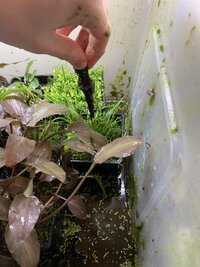Thanks for the details. Even with the plants being adapted to low oxygen levels in the substrate, wouldn't an increase in oxygen levels be an advantage? After all, the goal is to provide optimal conditions for plant growth.
I'd think every little bit would help. But even using a venturi, a constantly flooded system will never achieve the same levels of oxygen a "flood and drain" system could. You see, every time water drains from the root system it gets replaced by air with 21ppm oxygen whereas you can only get around max 8ppm dissolved oxygen in the water.
But as @dw1305 mentions, it may be that higher oxygen levels are not that relevant to the development of your chosen plants and the benefits would be negligible.
I see. I guess that’s why aeroponics is so successful. Well I’ll run this as is now, and if it doesn’t work out I’ll try a flood and drain system with a different substrate like clay pebbles. It should be quite easy to organise with a couple of dosing pumps.




